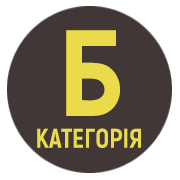PRAGMATIC AND FUNCTIONAL ASPECTS OF SPANISH YOUTH SLANG
DOI:
https://doi.org/10.32782/folium/2023.1.4Keywords:
youth slang, conversation, Spanish language, speechAbstract
This article deals with the phenomenon of youth slang. The paper reviews the concept of youth slang in the modern linguistics and it is devoted to the usage of youth slang in the modern Spanish language. It examines the conditions under which youth slang as a separate formation of the Spanish language reflects the level of culture, education and development of society and enters to the language of the modern Spanish youth. The purpose of the article is to describe and define the role of the youth slang in the Spanish speech and to identify the ways of youth slang formation. In this study the author pays attention to the types of youth slang vocabulary, the scope of its active use and gives some examples. Suffixation, word reductions, idioms and English borrowings are a good source for slang in Spanish language. A characteristic feature of youth slang is the use of constantly transforming language. One of the reasons of the explosion of new words and phrases can be the result of the development of technology. The new concepts that young people introduce in their speech are available to understand for all layers of the modern population, because they arise in conditions of easy daily communication. Slang performs an expressive function, giving an emotional and cultural connotation to the language. Widespread use of the slang expressions testifies the dynamic development of this vocabulary segment in the modern Spanish language. Youth style of speech is a way of communication in certain informal situations. The presence of youth language as a type of the social dialect is typical for every developed language. The desire of the young generation to separate themselves from the world of adults, the intention to speak their own language is the basis of emergence of the youth slang in any language.
References
Бацевич Ф.С. Основи комунікативної лінгвістики : підручник. Київ : Академія, 2004. 344 с.
Савицька Л. Арго, жаргон, сленг. Київ : Критика, 2005. 464 с.
Almela Pérez Ramón. Procedimientos de formación de palabras en español. Barcelona : Ariel, 1999. 253 p.
Marimón Llorca C., Santamaría Pérez I. Procedimientos de creación léxica en el lenguaje juvenil universitario. Estudios de lingüística. Universidad de Alicante. 2001. № 15. URL: https://www.researchgate.net/publication/28075186_Procedimientos_de_creacion_lexica_en_el_lenguaje_juvenil_universitario.
Gomez Torrego L. El léxico en el español actual: uso y norma. Madrid:Arco, 1995. 384 p. URL: https://www.arcomuralla.com/detalle_libro.php?id=76.
Real Academia Española: sitio web oficial. URL: https://www.rae.es.
Rodríguez, F. El lenguaje de los jóvenes. Barcelona : Ariel, 2002. Р. 29–56. URL: http://rua.ua.es/dspace/handle/10045/19083.
Rodríguez, F. Medios de comunicación y contracultura juvenil / Círсulo de linguística aplicada a la comunicación : Universidad Complutense de Madrid, 2006. Р. 5–30. URL: https://www.researchgate.net/publication/28109442_Medios_de_comunicacion_y_contracultura_juvenil.
Zimmermann K. La variedad juvenil y la interacción verbal entre jóvenes. En: F. Rodríguez. El lenguaje de los jóvenes, Barcelona : Ariel, 2002. Р. 137–163. URL: https://www.researchgate.net/publication/37930950_La_variedad_juvenil_y_la_interaccion_verbal_entre_jovenes.











